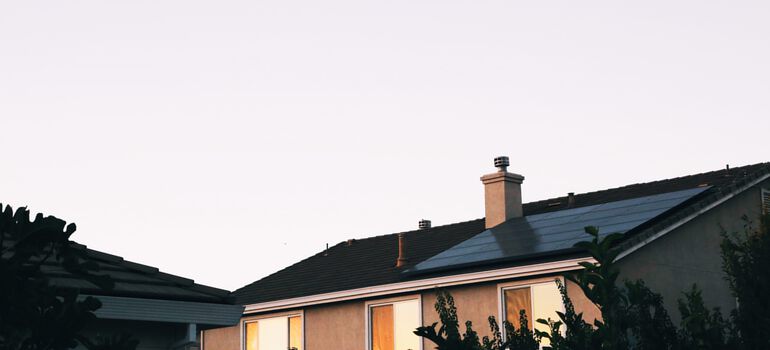While setting up a solar system for your home can be serious business, solar panels can be quite fun as well. They are really amazing creations, so today I I decided to share some cool facts about solar panels. Here are 10 amazing facts that you probably didn’t know about solar power.
Solar Power Is Cheaper Than Grid Power
With solar panels going for less than $1 per watt, solar power is officially cheaper than grid power. And, with grid power costs only rising, a solar system is a better and better investment over time. Where am I finding such cheap panels? Check out the following link for my current solar panel recommendation:
The Math. According to data from EIA, the average residential power price in the USA in July this year was cents 13.26/kWh. Although, in some places it was as high as 28.87 cents.
According the National Renewable Energy Laboratory, most areas of the United States average 5Wh per watt of panel, per day over the course of a year. And, assuming that a solar system lasts 20 years, that makes the total cost of solar power about 10 cents per kWh.
Solar power is highly competitive over the life of the system.
While this price does not account for energy storage or other electronics, which would be required for an off-grid, or on-grid solar system, in many states, off grid solar is a cheaper option than grid power. For more information on pricing out and setting up your own solar system, check out my in depth guides:
You Can Power A Standard AC Unit With Solar Power
One of the most common people ask about off grid solar, is if it can run your standard wall AC unit, or a whole house heat pump. And, the short answer is yes!
Because AC unites are most commonly run on bight sunny days, you don’t need many, or any expensive batteries to store power. Likewise, your solar panels are probably running at 100% or more efficiency during that time. (Solar panels can actually produce more than their rated power on sunny days. See below for more on that.)
However, being smart and incorporating passive cooling in to your off grid system, as well as typical modern AC units, can save you a lot of money in the long run.
For info on how to best set up an off grid AC unit, and how to incorporate passive cooling, check out my in depth article:
You Can Store Solar Power For Later Use
While solar panels can only produce significant power when the sun is out, off grid solar systems are capable of storing power from the daytime for use at night and on cloudy days.
For Grid Connected solar systems, you have the option of only using solar power in the day time, and paying for power from the grid the rest of the time. If you are lucky enough to live in s state that requires power companies to buy back excess power for consumers, you may even be able to break even or get a check from the power company, without having to stare any power yourself.
The down side to this option is that you typically need a professionally installed solar system, and you are still dependent on the grid for your power during dark parts of the day.
For Off Grid power systems, you instead store excess power you produce during the day in a large battery bank. This makes your energy production 100% independent. You can use this as your main power source, or as a fallback to supplement other sources of power.
Solar Power Can Power Appliances
While solar panels typically produce 12V or 24V DC, suitable for charging batteries, you have the option of converting this power to typical 120V (or 240V) AC power, which is used in common wall sockets.
Solar power is capable of powering any appliance or device that you currently use, without any necessity for conversion.
However, for a 100% solar home, there are some befits to buying dedicated DC appliances. Since these appliances are usually meant to be run off batteries, they tend to be much more efficient than common AC consumer units. Running appliances directly from DC power also reduces power lost during the DC to AC conversion process, which means you need less power overall.
Most Solar Parts Are Interchangeable
Solar panels, charge controllers, batteries, inverters, etc are usually designed to be able to run on any solar power system. This means you can mix and match to save money, and upgrade your system as little at a time, instead of committing to a large system all up front.
Having the freedom and flexibility to design and grow your own system over time is one of the best parts of off grid solar. But, there are a few aspects of your system that you need to know in order to choose parts with the right specs to work with what you have, or what you are planning to build. My easy guide walks you through how to do this step by step:
You Don’t Need Direct Sunlight to Capture Solar Energy
While direct sun is usually the most efficient, solar panels can produce power even in cloudy, shady, or dim conditions.
It is actually far more important that solar arrays have even lighting rather than bright lighting. To find out why, read:
Cheaper Solar Panels Are Usually Better
While solar panel technology is constantly progressing, poly-crystalline to mono-crystalline to flexible, currently the older and cheaper technology is far superior to the newer models.
Here is why the cheaper poly-crystalline solar panels are better —
- Lower cost per watt of power
- Less likely to overheat, producing more power and lasting longer
- Not much bigger than the alternatives
For a lot more information on why poly-crystalline solar panels are better, and when they are not, read my full article here:
Solar Panels Produce More Power on Colder Days
Research in to solar panels has shown that they produce more power in colder temperatures. This means, on a cold, sunny day, your solar panels may be even more efficient than on a hot sunny day.
One by take away from this, is that where you place your panels and how they are mounted can make a big different when it comes to how much power they actually produce.
Mounting panels directly on the top of a hot roof not the best way to go. At minimum, solar panels should have plenty of space on both sides of the panels, to allow natural convective air flow to cool down the panels.
However, I generally recommend you mount your panels on a ground based system, rather than a roof system, whenever possible.
All Solar Panels Are Actually LED Lights in Hiding
Interestingly enough, solar panels and LED lights are built in the same way. LED lights actually produce a small amount of power when they are exposed to bright light. And, solar panels can light up when feed the right amount of current.
Check out the fun video above to see a demonstration of how this works.
Solar Panels Can Produce More Than 100% Their Rated Power
One thing that most people don’t know is that a 100W solar panel can produce more than 100 watts.
Solar panels are rated by their output on a typical bright sunny day, called “(standard test conditions](https://www.siliconsolar.com/what-are-standard-test-conditions-stc/),” with a solar irradiance of 1000W / square meter and a panel temperature of 25C. But, sunny days in many areas of the United States and around the world can exceed this on regular basis.
Therefore, you can get 10% – 20% more power from your solar system, as long as the panels are well cooled.


